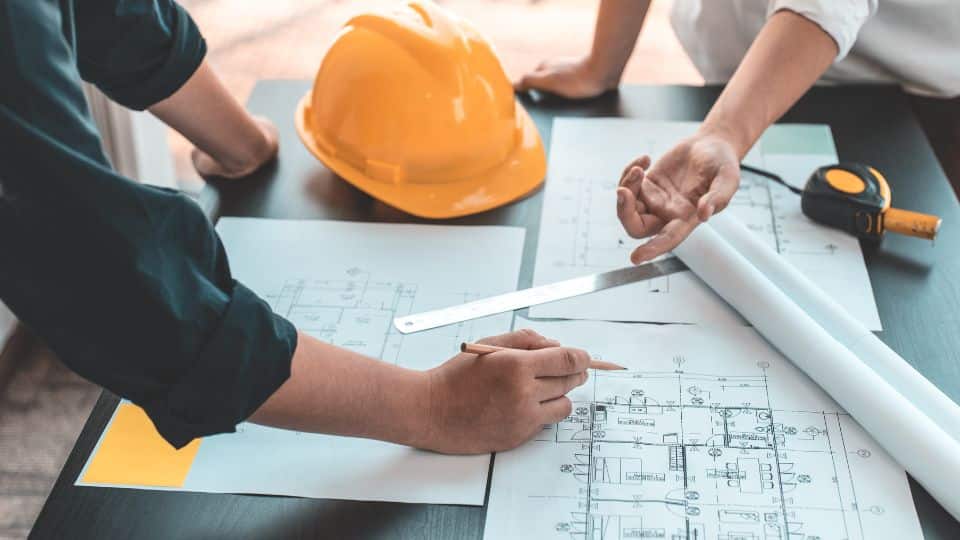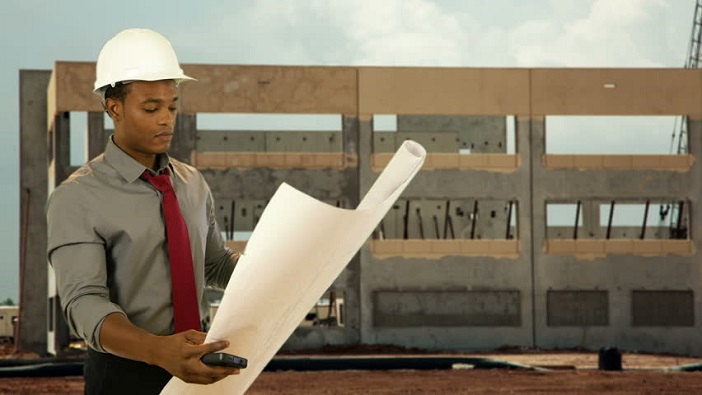Architect Services Detailed: What to Expect from A to Z
Architect Services Detailed: What to Expect from A to Z
Blog Article
Comprehending the Diverse Occupation Paths Available for Aspiring Architect
As an aspiring Architect, you have a globe of job courses waiting on you. Each course provides unique difficulties and chances to use your creative thinking and technological expertise. Whether you're drawn to standard style or the nuances of lasting layout, there's a specific niche that aligns with your rate of interests. Understanding these varied options can shape your professional journey, yet which direction will you select to check out initially?
Standard Style: Creating Structures and structures
Traditional design concentrates on developing structures and structures that blend performance with aesthetic allure. As you discover this area, you'll value the intricate equilibrium between form and objective. You'll learn to attract inspiration from historical styles, integrating components like symmetry, products, and workmanship. Your designs can mirror cultural heritage, showcasing regional practices while satisfying modern-day demands.
You'll establish skills in composing, model-making, and website analysis, allowing you to visualize and communicate your concepts effectively. Involving with customers, you'll need to understand their vision and convert it right into practical styles.
Additionally, building codes and sustainability practices are important in your work, ensuring your structures are risk-free and eco-friendly. As you expand in your occupation, you'll discover possibilities in residential, commercial, or perhaps reconstruction tasks, each offering unique obstacles. Welcoming traditional style leads the means for a fulfilling profession that admires the past while shaping the future.
Urban Planning: Forming Areas and Public Spaces
As a hopeful Architect, you can play an important role as a city coordinator, changing exactly how communities engage and function. By utilizing community involvement techniques, you'll assure that citizens have a voice in shaping their setting. Plus, incorporating lasting style concepts will certainly help create areas that not just meet today's requirements yet also shield the future.
Role of Urban Planners
While lots of could think about designers as the single visionaries behind buildings, metropolitan organizers play a necessary duty fit the wider landscape of communities and public areas. They assess land usage, zoning laws, and neighborhood requires to develop lasting environments that enhance lifestyle. By teaming up with numerous stakeholders, you'll help develop parks, transportation systems, and household locations that promote social interaction and availability. Urban organizers additionally concentrate on environmental considerations, guaranteeing that growths incorporate environment-friendly rooms and assistance biodiversity. Your know-how in spatial layout and area characteristics permits you to picture future growth while preserving cultural heritage. In this critical role, you'll directly influence exactly how individuals experience their surroundings, making every job a possibility for positive adjustment.
Community Interaction Strategies
Efficient neighborhood involvement strategies are important for metropolitan coordinators to assure that the voices of homeowners are listened to and valued in the preparation process. To foster meaningful dialogue, you ought to prioritize open online forums and workshops where neighborhood participants can reveal their ideas and worries. By proactively including and paying attention feedback, you'll create spaces that reflect the community's needs, ultimately leading to more successful and sustainable metropolitan environments.
Lasting Design Principles
When developing city spaces, incorporating sustainable style principles is crucial for creating environments that flourish both ecologically and socially. You should start by concentrating on power performance, making use of products that minimize waste and promote recycling. Take into consideration incorporating environment-friendly areas, like gardens and parks, to enhance biodiversity and boost air top quality. Promoting walkability and public transport can minimize dependence on cars, fostering a much healthier area.
Designing with water conservation in mind is also essential-- think of rainfall yards and permeable surface areas to handle stormwater. Involving area members during the preparation process guarantees that the areas you create fulfill their requirements and encourage social communication. By accepting these concepts, you'll add to lively, sustainable urban landscapes that profit every person.

Landscape Architecture: Creating Sustainable Exterior Settings
As you discover landscape style, you'll find vital layout concepts that create practical and stunning outside rooms. Sustainable practices play an important duty in making sure these atmospheres grow while lessening environmental influence. Plus, you'll locate a variety of career possibilities that allow you to make an actual difference in exactly how people engage with nature.
Layout Principles in Landscape
Recognizing design concepts in landscape architecture is necessary for creating sustainable exterior environments that balance with nature. You'll require to contemplate aspects like percentage, range, and balance to guarantee your styles really feel cohesive and welcoming. Incorporating indigenous plants not just enhances biodiversity however likewise lowers water usage, making your landscape durable. Think concerning the flow of room and exactly how individuals communicate with it; paths and seating areas need to invite expedition and hop over to these guys leisure. In addition, pay attention to seasonal adjustments, designing with products that complement the environments year-round (Architect). By focusing on sustainability and aesthetics, you can produce outdoor areas that enrich the community and promote health. Embracing these principles will certainly set a strong structure for your occupation in landscape design.
Sustainable Practices Summary
Lasting methods in landscape design not just concentrate on visual appeals but additionally prioritize eco-friendly wellness and resource preservation. You can develop areas that promote dirt health and wellness, such as using natural materials and exercising permaculture principles. Inevitably, these practices assure your styles profit both people and the atmosphere for years to come.
Job Opportunities Expedition
With a solid foundation in lasting methods, landscape architecture offers a selection of profession paths that permit you to make a significant impact on the setting. Urban coordinators frequently team up with landscape designers to create environment-friendly areas in urban setups, enhancing city livability. If you're enthusiastic regarding education, take into consideration ending up being a landscape architecture instructor, motivating future generations.
Sustainable Layout: Concentrating On Eco-Friendly Practices
As you explore your job in design, embracing environmentally friendly techniques can set you apart in an affordable field. Lasting style concentrates on producing buildings that decrease environmental influence while enhancing passenger well-being. By integrating renewable products, energy-efficient systems, and lasting building strategies, you'll add to a greener future.
Beginning by acquiring knowledge of environment-friendly qualifications like LEED or BREEAM, which can boost your credentials. Take into consideration how natural light, air flow, and thermal performance can optimize design. Work together with designers and ecological consultants to innovate options that lower waste and conserve resources.
Don't fail to remember the relevance of community involvement-- appealing regional stakeholders can influence layouts that integrate with the setting. As customers increasingly prioritize sustainability, your experience in environmentally friendly methods will not only bring in tasks but also satisfy your enthusiasm for liable design. Embrace this important aspect of the profession, and watch your job grow.
Historic Conservation: Shielding and Restoring Social Heritage
While you commence on your architectural journey, think about the important function of historical conservation in preserving our social heritage. This field concentrates on the security and remediation of significant structures, sites, and structures that inform the tales of our past. By participating in historic conservation, you'll assist secure the architectural legacy that forms area identification.
As a historic conservation Architect, you'll evaluate historic relevance and evaluate the condition of frameworks. You'll work closely with chroniclers and conservationists to guarantee genuine remediation methods are utilized. This profession course allows you to mix imagination with research, allowing you to design remedies that respect initial products and craftsmanship.
Your job not only adds to sustainability by reusing existing structures yet additionally cultivates a feeling of satisfaction within neighborhoods. Welcoming this path will certainly help you end up being a guardian of history, maintaining the stories and visual appeals that improve our lives.
Interior Design: Enhancing Indoor Spaces
Historical preservation and interior design both share a dedication to enhancing the developed setting, but they concentrate on various facets. While historic preservation highlights keeping a framework's historical and social worth, indoor architecture nos in on enhancing interior rooms a fantastic read for functionality and looks.
As an ambitious Architect, you'll find that interior design permits you to mix creativity with technical skills. You'll develop areas that not just look excellent yet also promote comfort and effectiveness. This area includes recognizing just how light, shade, and products connect within a room, influencing state of mind and usability.
You'll deal with numerous tasks, from residential homes to commercial offices, guaranteeing that each atmosphere satisfies the requirements of its residents. By prioritizing user experience, you can transform interiors right into useful and motivating areas, making a substantial influence on exactly how people communicate with their surroundings. Embrace the possibility to boost interior atmospheres and shape the way people live and work.
Industrial Design: Combining Performance With Looks
Industrial design plays an important role in developing items that effortlessly mix aesthetic appeals with capability, making sure that what you use day-to-day is not just visually attractive however also functional. As an aspiring Architect, you might immerse on your own in this area, focusing on making whatever from furniture to customer electronics. Your job involves recognizing individual demands, products, and manufacturing procedures, allowing you to produce innovative options that enhance day-to-day experiences.
In industrial layout, you'll commonly collaborate with marketing professionals, engineers, and makers, making certain that your designs are not only beautiful however additionally feasible. You'll discover to stabilize form and feature, focusing on functionality without compromising design. By honing your skills in laying out, 3D modeling, and prototyping, you'll be well-equipped to bring your ideas to life. This job path uses a vibrant environment where creativity satisfies functionality, making it a fulfilling option for architects interested in shaping the products of tomorrow.
Regularly Asked Concerns
What Educational Credentials Do I Required to End Up Being a Designer?
To become an engineer, you'll need a professional level in design, usually a Bachelor's or Master's. Furthermore, you'll have to finish an internship and pass the Architect Enrollment Examination to exercise legally.
Exist Accreditation Requirements for Various Architectural Occupation Paths?
Yes, there're accreditation needs for different architectural courses. Architect. You'll need to pass exams, complete teaching fellowships, and in some cases pursue specialized training, depending upon your chosen focus, like landscape style, metropolitan layout, or historic conservation
What Software Abilities Are Essential for Designers Today?

How Can I Gain Practical Experience While Researching Design?
You can gain sensible experience by interning at architectural companies, taking part in design competitors, volunteering for area projects, or working together with classmates on real-world assignments. These possibilities improve your skills and construct useful connections in the sector.
What Task Opportunities Exist Outdoors Conventional Style Firms?
You can check out numerous job chances outside traditional style companies, like urban preparation, interior decoration, landscape architecture, construction monitoring, genuine estate development, or even duties in sustainability consulting. Each offers unique obstacles and incentives.
Whether you're drawn to standard style or the nuances of sustainable style, there's a niche that lines up with your rate of interests.When making urban areas, including lasting design principles is vital for developing environments that flourish both environmentally and socially.As you discover landscape style, you'll discover vital layout concepts that develop stunning and useful outside areas.Understanding design principles in landscape architecture is important for producing sustainable outside atmospheres that balance with nature.In commercial style, you'll commonly work together with marketers, description designers, and suppliers, making certain that your layouts are not just lovely however also feasible.
Report this page